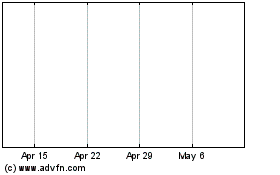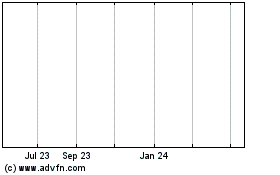Canada's Banks Not Better Capitalized Than US Rivals Under Basel III: Analyst
January 31 2011 - 12:38PM
Dow Jones News
Canada's six largest banks will not be better capitalized than
their major U.S. counterparts under Basel III, Canaccord Genuity
analyst Mario Mendonca said in a research report Monday.
Under the anticipated Basel III rules, common equity Tier 1
ratios for the Canadian banks are, on average, 160 basis points
lower than the U.S. banks that disclosed their pro forma common
equity Tier 1 ratios in fourth-quarter reports, he said. Canada's
top banks come in at 5.7%, compared to 7.3% for U.S. banks.
Mendonca included in his U.S. bank sample J.P. Morgan (JPM),
BB&T Corp. (BBT), PNC Financial Services Group Inc. (PNC),
Regions Financial Corp. (RF), SunTrust Banks Inc. (STI), U.S.
Bancorp (UBS) and Wells Fargo Corp. (WFC). But Citigroup Inc. (C)
and Bank of America Corp. (BAC) were not included since they didn't
disclose their pro forma ratios.
Canada's financial system has been highly touted since the 2008
financial crisis as the world's safest, best-capitalized and the
best regulated.
"We do not believe it is appropriate to make the claim that
Canada banks are better capitalized," Mendonca said.
The Basel III rules will force banks worldwide to hold thicker
capital cushions and deeper pools of liquidity to guard against
potential losses and potentially crippling bank runs. Under the new
rules, banks must hold a minimum common equity Tier 1 ratio of 7%
by 2019. The Basel Committee calculated that the world's 94 largest
banks will need to raise 600 billion euros of equity to lift their
core Tier 1 ratios to 7%, based on December 2009 balance
sheets.
In Canada, the big six have all stated that their Tier 1 capital
ratios will be at 7% by the end of 2012, when the phase-in period
of Basel III begins, without raising new capital or changing their
business.
And, while Mendonca believes they will have little or no
difficulty reaching the required minimum capital ratios according
to the Basel III schedule, he said the six largest banks "can
clearly be broken up in two camps - the 'haves' and the 'have
nots.'
The 'haves' include National Bank of Canada (NA.T), Bank of
Montreal (BMO) and Canadian Imperial Bank of Commerce (CM). They
have "significant excess capital," he says.
The 'have-nots' -- Royal Bank of Canada (RY), Toronto-Dominion
Bank (TD) and Bank of Nova Scotia (BNS) -- are seen to "limp into
2013 just barely meeting the 7% threshold," the report said. The
gap between the high and low bank, National Bank and TD,
respectively, is about 300 basis points.
"Reaching a 7% common equity Tier 1 ratio by 2012 is not as easy
as we originally thought," Mendonca said.
Adjusting for excess common equity, the 'have' banks are trading
at "even greater" discounts to the 'have not' lenders than a simple
comparison would suggest, he wrote.
He doesn't believe the market is making a distinction between
the banks in terms of capital strength measured on a Basel III pro
forma basis likely because a lot can change in two years before the
self-imposed fourth-quarter 2012 deadline. He pointed out that
counterparty and market risk-weighted assets mitigation and/or a
major misstep from one or more banks could change the picture
materially.
Mendonca said each of the Canadian banks reviewed his work and
provided varying amounts of guidance and correction. He also noted
the banks could not confirm his final Tier 1 calculations because
he simplified his assumptions on market and counterparty risk. As a
result, his precise pro forma result is "almost certainly wrong"
but he believes the conclusions "are appropriate and fair," the
report said.
Canaccord Genuity has a hold recommendation on five of Canada's
six banks, with the exception of TD, which is rated a buy and has a
price target of C$83.
-By Caroline Van Hasselt; Dow Jones Newswires; 416-306-2023;
caroline.vanhasselt@dowjones.com
Mercantile Bancorp (AMEX:MBR)
Historical Stock Chart
From Mar 2024 to Apr 2024

Mercantile Bancorp (AMEX:MBR)
Historical Stock Chart
From Apr 2023 to Apr 2024
